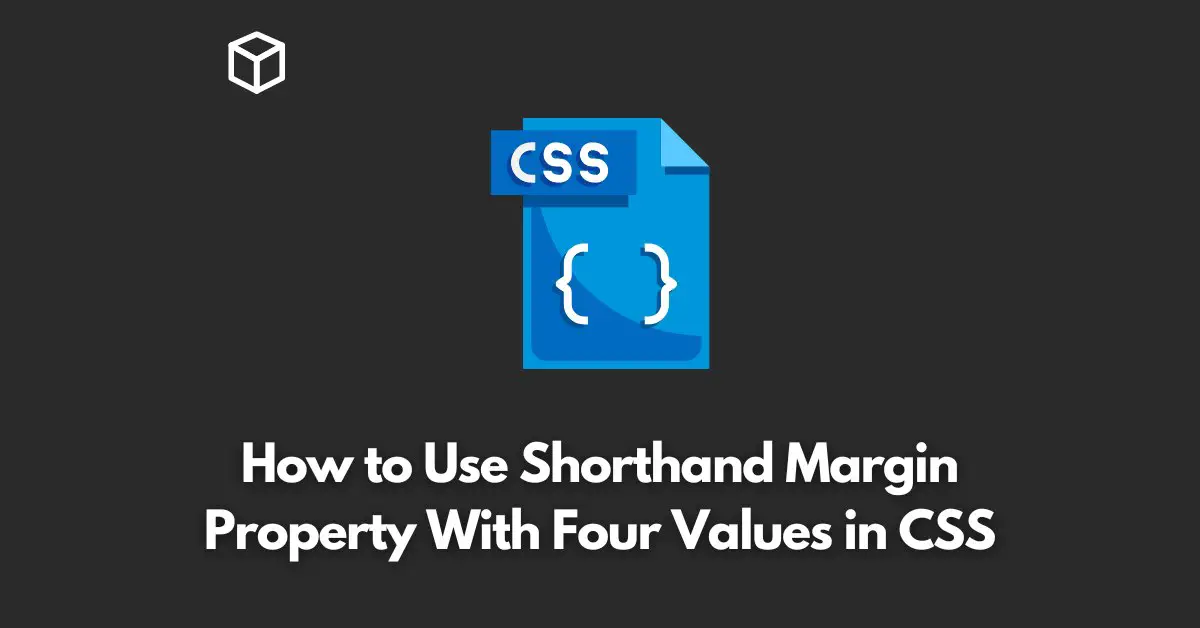As a web developer or designer, you may have come across the need to add margins to your HTML elements.
The CSS margin property allows you to add space around an element, outside of any defined borders.
In this CSS tutorial, we will be discussing the shorthand margin property and how to use it with four values.
The shorthand margin property is a shorthand property that allows you to set the margin for all four sides of an element in one line of code.
This property can be written as margin: top right bottom left;. The values for each side can be in length units (px, em, etc.) or percentage values.
For example, the following code will set a margin of 20px for the top, 10px for the right, 30px for the bottom, and 40px for the left of an element:
.element {
margin: 20px 10px 30px 40px;
}It is also possible to use the shorthand margin property with just one value.
In this case, the value will be applied to all four sides of the element. For example, the following code will set a margin of 10px for all four sides of an element:
.element {
margin: 10px;
}Similarly, you can also use two or three values with the shorthand margin property.
If two values are used, the first value will be applied to the top and bottom and the second value will be applied to the right and left.
If three values are used, the first value will be applied to the top, the second value will be applied to the right and left, and the third value will be applied to the bottom.
.element {
margin: 10px 20px;
}.element {
margin: 10px 20px 30px;
}It is important to note that the shorthand margin property will override any previous margin values set for individual sides.
For example, if you have previously set a margin-top value of 20px, and then use the shorthand margin property to set a margin of 10px, the margin-top value will be overridden and become 10px.
In conclusion, the shorthand margin property allows you to set the margin for all four sides of an element in one line of code.
It is an efficient way to control the spacing around elements on a web page and can be used with one, two, three or four values.
With a good understanding of the shorthand margin property, you can easily control the layout and spacing of your web pages.




